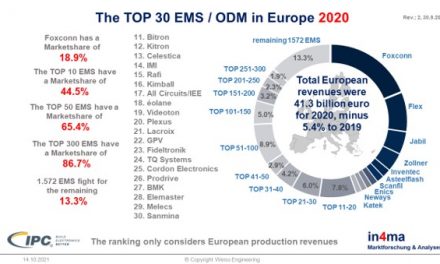EDDI & I – Some Supply Chain Relief, But What Next?

By Philip Spagnoli Stoten Founder of SCOOP
We saw another month of steady but substantial improvement in the numbers coming out of this month’s Electronic Design to Delivery Index, or EDDI, from Spectra, delivered by the team at NEXAR, who also bring you Octopart. The report continues to show shifts in both Supply and Demand Indices. The Industry Supply Index increased by 4% month-over-month while the Industry Demand Index declined by 8%, pushing up further towards balance. And let’s face it, balance might be nice for a while.
But what can we expect going forward and what else is the market telling us?
Well first and foremost the elephant in the room is the economic situation. This, of course, begs the question, is the move towards balance a trend towards a downturn where increasing supply runs right past reducing demand and we end up with oversupply?
According to FutureHorizons’ midterm, the semiconductor industry update, the future is far from sunny. Clouds on the horizon include rising inflation, global recession, supply chain disruptions, the war in Ukraine, the Chips Act, and the reshoring, or onshoring, trend, all pointing towards an apparent semiconductor market downturn. Whilst FutureHorizons are just forecasters, it’s worth noting that after their projection of 18% semiconductor growth against actual growth of 26.6% in 2021, they were awarded “Forecaster of The Year”. This was the same set of forecasts where they suggested we should enjoy the super-cycle and expect a crash in 2023.
They revised their growth estimates for 2022 down from 10% to 6% in May citing consumer spending squeeze as the cause, and predicted the downturn would start to impact in Q3 as increased capacity loosens supply constraints. They also suggest there is a strong denial sentiment, partly because the downturn is, and will continue to be patchy, although it is likely no sectors will be 100% immune.
As Malcolm Penn, FutureHorizons’ Chairman and CEO, explains, “Global inflation shocks are coincident with economic slowdown and every single warning light is now flashing red”, adding that “with capex spend as a percentage of sales (23%) at a 20-year high an overshoot is inevitable.” For more color, take a look at the highlights reel from the IFS2022-MT webinar, held on September 13th.
Anecdotally, the EMS industry remains bullish, order books are higher than ever and new products and projects seem abundant. It’s worth remembering that downturns in the semiconductor sector do not always directly impact the EMS industry.
I have, as always, been chatting with the movers and shakers of the manufacturing world and the overriding message has been a combination of frustration with the supply side of their business and satisfaction and optimism with the demand side.
The shift to electric vehicles, and to eMobility in general, is creating additional demand and sectors like aero, defense, medical electronics and IoT seem to be growing at a solid pace. Record levels of employment are also a counter indicator to recession and while interest rates are rising relatively fast, they still remain low in absolute terms.
Back to EDDI and as always the devil is in the detail
At first glance the trend is clearer this month than any previous month. On the supply side every single index is up. The overall Industry Supply Index was up 4% and is now at 99, its highest figure since November 2020. Remember all indices are baselined against January 2020, and the Index dropped as low as 68 in July of 2021. The integrated circuits supply index is now back up to 90, a rise of 7%, after a low of 70 as recently as May this year.
The largest category increase in this month’s Supply Index is in the discrete semiconductor category with an uptick of 9%, that’s 15% up since July. This is the fourth consecutive month of an increasing supply trend for the semiconductor category. But this index still remains relatively low at 72. The question remains, are these month-over-month increases in the supply index hinting that we are nearing the end, or at least an easing, of component shortages?
Just as we see green lights throughout the supply side, we are seeing red lights on every single index on the demand side. The overall Industry Demand Index dropped 12% to 143, which is still a very high number, but a drop from the all time highs in the 160s that we saw from September last year to March this year.
The demand for Integrated Circuits shows the largest decline month over month with a 24 point or 6% change, although that too remains at 215, so more than double the January 2020 baseline. The discrete semiconductor demand index also dropped by 21 to 173, its largest decline in a single month.
Numbers may have dropped in recent months, but they are still high and well above the base of 100. Meanwhile supply is still below 100, albeit by just one point.
All in all, we seem to be seeing two pendulums swinging in opposite directions, both gaining momentum. Supply pressure seems likely to ease, while demand looks likely to reduce somewhat. That momentum suggests that they will pass at speed and as soon as Q4 we may see a situation where the supply and demand scales are leveled or even tipped in the opposite direction.
There is little doubt that supply and subsequent demand shocks related to the pandemic have created the momentum in both pendulums, but it appears economic shocks, some caused by geopolitics, are causing the momentum to increase rather than abate.
More next month… Thanks EDDI…
Spectra’s EDDI features the most recent and comprehensive look at the electronics industry supply and demand trends. Download the latest report today to access important insights to help you and your company navigate the electronics industry supply chain and make better business decisions.













